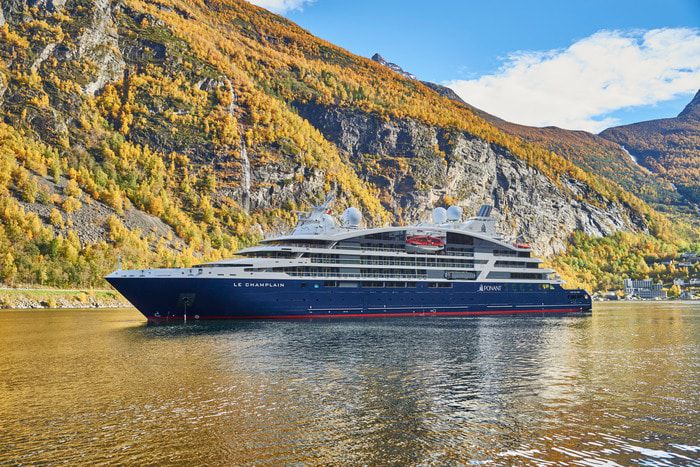A Circumnavigation of Sicily aEUR" with Smithsonian Journeys
In alliance with Smithsonian Journeys.
This cruise is part of a collection of PONANT voyages that are specially-tailored for English-speaking travelers who want to engage with the world. In addition to the usual elements of the PONANT experience, the listed price for these voyages includes transfers to and from the ship, talks and discussions aboard ship by world class experts, and a shore excursion or activity in each port of call that encourages guests to embrace the sights, sounds, tastes, and smells of the local environment and culture.
We invite you to join us on a circumnavigation of Sicily, a crossroads of the many historical civilizations - Greek, Roman, Arab, Byzantine, Norman - that have flourished along the shores of the Mediterranean.
Call first on the Maltese isle of Gozo, an unspoiled island with spectacular scenery that is home to the megalithic Ggantija Temples, which are listed by UNESCO as a World Heritage site. Explore the temples or learn about local arts and crafts.
Setting sail from Malta, your next stop is Porto Empedocle, gateway to the fabled Greek temples of Agrigento, among the most captivating ruins in the entire Mediterranean. Rounding the western tip of the island, you arrive in Trapani for an excursion into the countryside and the ancient Doric temple of Segesta or to medieval Erice, perched on a high triangular plateau sloping down to the sea.
Your fifth day aboard Le Champlain brings you to Palermo, founded by the Phoenicians in 827 BC and becoming one of Europeâs greatest cities in the 12th century, when the Normans took control. Here you will visit Cappella Palatina, a Byzantine-Arab-Norman structure featuring dazzling mosaics and magnificent inlaid marble floors and walls. Or drive to nearby Monreale to explore its famed Norman cathedral.
In Lipari, discover the 16th-century Norman castle-turned-archaeological museum on the site of an ancient acropolis before sailing in the evening to Stromboli, whose active volcano provides the backdrop as you cruise around the island.
From Stromboli, your ship sails through the Strait of Messina to arrive at Taormina on Sicily's east coast. Visit a winery on the slopes of Mount Etna, the largest active volcano in Europe, or tour Taormina town with its emblematic Greek theater offering dramatic views of the coastline.
The final port of call before your voyage comes to an end in Valletta is Syracuse, colonized by Greeks in the 8th century BC only to grow to rival Athens as one of the most powerful cities of the ancient world. You will visit the Roman Amphitheater of Augustus and the 15,000 seat Greek theater or Ortygia, the old town and its Baroque cathedral.
When searching for a luxury yacht expedition cruise, there’s one name above all else that you need to know – Ponant Cruises. Founded in 1988 by former French Merchant Navy officers, Ponant combines succulent luxury with authentic adventures on all seven continents.
From classic Mediterranean itineraries and Caribbean sailings, to bucket-list expeditions around Greenland and Antarctica, Ponant cruises proudly counteract the banality of mainstream voyages with a unique take on the concept of small-ship cruising. It’s the absolute trip of a lifetime.

Featuring innovative and environmentally-friendly equipment, elegantly designed cabins, spacious suites with large windows, and lounge areas that open onto the outside, this new limited-capacity yacht boasting just 92 cabins and suites will offer you a truly unique cruising experience.




